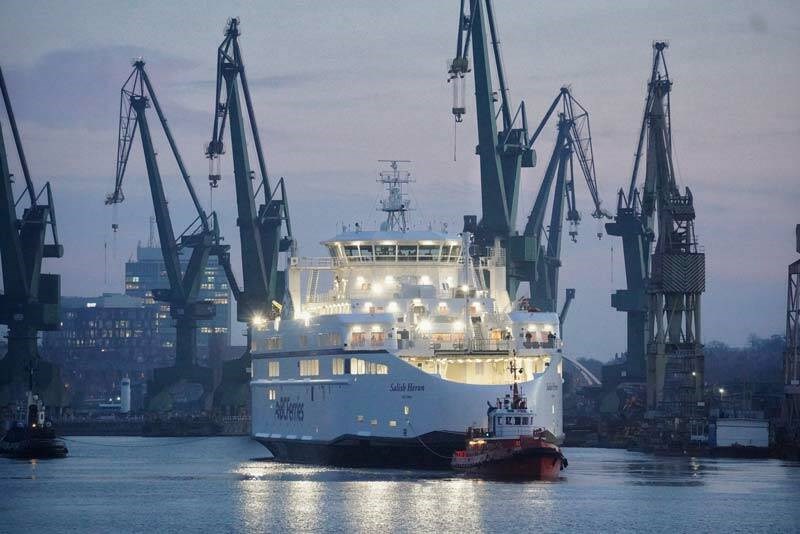As the sixth Island Class B.C. Ferries vessel sailed into Victoria’s harbour Wednesday, the final Salish Class vessel started its 10,000 nautical mile journey from Poland to B.C.
The new Salish Heron, the fourth of its class to join the fleet as part of a $92.3 million order, has left Remontowa Shipbuilding in Gdansk and is expected to arrive in Victoria in about 55 days.
Salish Heron, which operates on liquefied natural gas and has the capacity for 138 vehicles and 600 passengers, will be put into service in the southern Gulf Islands. The other three Salish Class vessels were put into service in 2017.
It’s the latest in a series of new vessels ordered by B.C. Ferries as part of a $3.9 billion capital plan it filed in 2018.
The plan, which earmarks $2.3 billion for vessels and $1.3 billion for terminals, is the largest capital plan in B.C. Ferries history. It includes renovation of Swartz Bay and a complete overhaul of Horseshoe Bay.
The plan outlines spending up until 2030 and is designed to take pressure off a system that before the pandemic was being taxed by record passenger demand.
It suggests renewing 19 of B.C. Ferries’ 36 vessels and adding new major vessels.
Captain Jamie Marshall, B.C. Ferries’ vice president of shipbuilding, said the company has three immediate priorities out of the capital plan — full electrification of the Island Class vessels, building more Island Class vessels and re-starting its major-vessel program.
Marshall said B.C. Ferries put the major vessel program on hold during the pandemic but are now assembling a team to start the design phase over the next 12 to 18 months.
Under the plan, new major vessels will be zero-emission, and Marshall said they will be trying to make them zero waste as well.
A new class of vessel would be created, with six or seven ships, to replace older C-Class vessels such as Queen of Oak Bay, which was built in 1981 and has a car capacity of 308, and a passenger-and-crew capacity of 1,494.
Marshall said given the time it takes to design and build the vessels it will be 2028 or 2029 when the first one is put into service.
But the first thing on the agenda is electrification of the six Island Class vessels, procured in a $200 million deal with Damen Shipyards.
Each of the Island Class vessels is a hybrid, running a diesel-electric engine with the ability to operate as a fully electric ship once B.C. Ferries has installed plug-in recharging capabilities at the nine affected terminals.
Marshall said they have contacted the federal government for funding help.
The work to fully convert the ships — additional batteries, cabling and the plug-in assembly for charging overnight — will be done in Canadian shipyards.
“The second push is building some more Island Class vessels,” he said. B.C. Ferries plans to eventually have 12 or 13 fully electric vessels, each capable of carrying 47 vehicles and up to 450 passengers and crew. They are double-ended for easy loading and unloading. “That would basically be our complete minor class fleet in the system.”
Marshall said 2022 is a big year for B.C. Ferries with five new vessels being put into service: Salish Heron and the four newest Island Class vessels — the not-yet-named Island 6, which just arrived in Victoria, Island Kwigwis, Island Nagalis and Island K’ulut’a.



